|
|
Millimeter-Wave Electronics Group
|
Queen's University at Kingston
|
_____________________________________________________________________________________________
|
|
Main
• People • Research
• Publications •
News
• Facilities
|
_____________________________________________________________________________________________
|
|
|
| Antennas Research
|
|

|
|
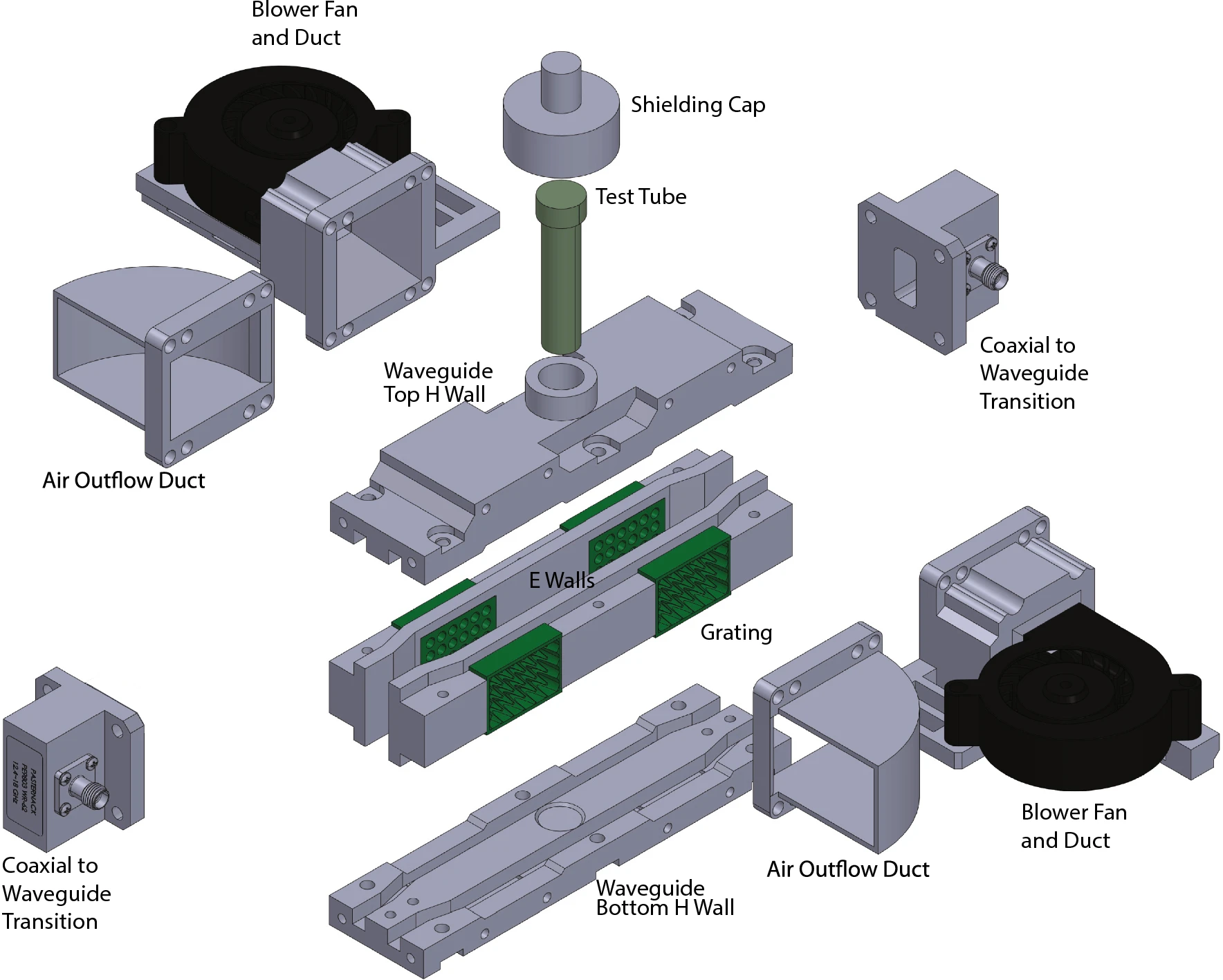
|
|

|
| Highly selective dual-band filtering antenna with nonuniform metasurface overlay. The filtering passbands are centered at 19 GHz and 27 GHz ... read more |
|
Deactivation of the human coronavirus (HCoV-229E) is observed following irradiation with 2 W of power in the 15.0-19.5 GHz band ... read more
|
|
Wideband magnetoelectric (ME) dipole antenna beam steering array in the 24 GHz band exhibiting a peak realized gain over 13 dB ...
read more |
|
|
|
|
|
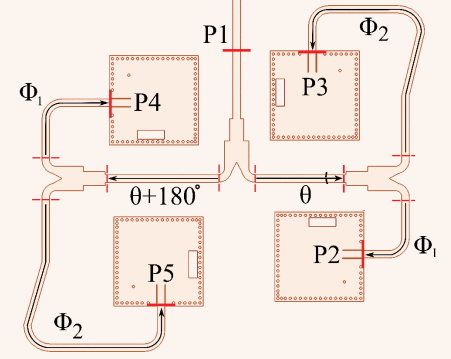
|
|
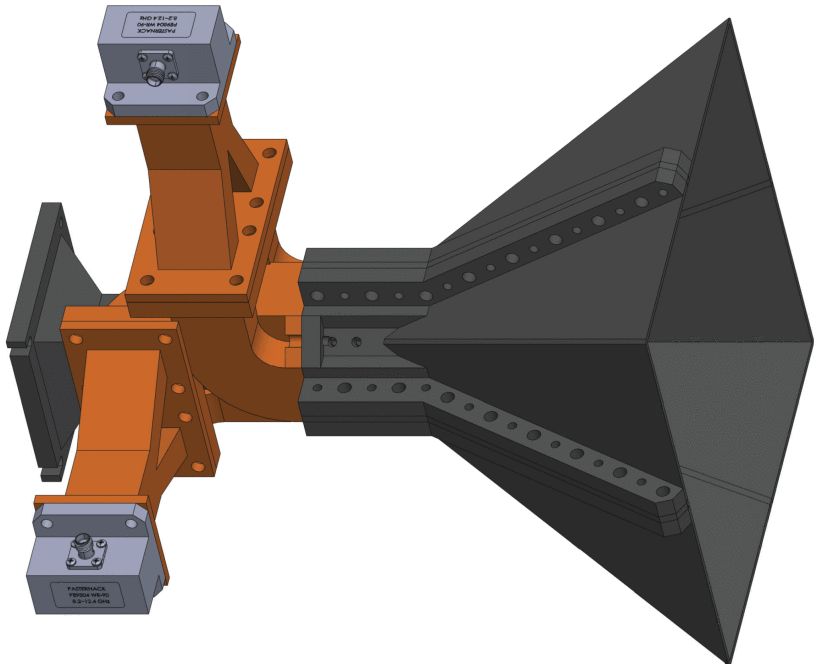
|
|

|
| Advanced high-selectivity filtering antennas. A first SIW layer contains a filtering doublet and second layer above has a cavity-backed slot antenna ... read more |
|
Dually symmetric metal 3D printed orthomode transducer (OMT) and horn antenna with peak realized gain of 20.5 dBi at X-band ... read more
|
|
75 GHz to 110 GHz 3D printed dielectric lens and support structure on WR-10 open-ended waveguide ...
read more |
|
|
|
|
|
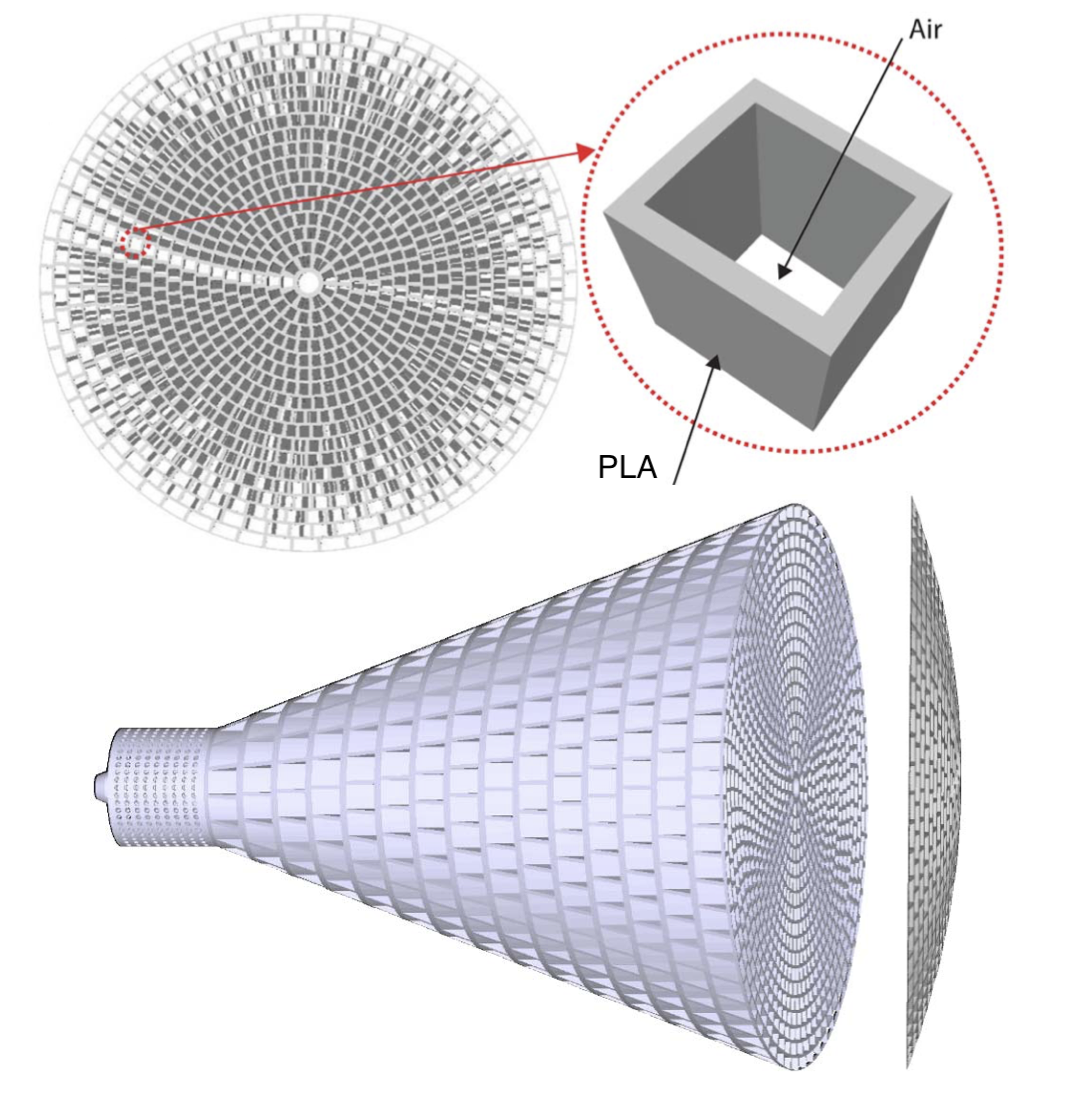
|
|

|
|
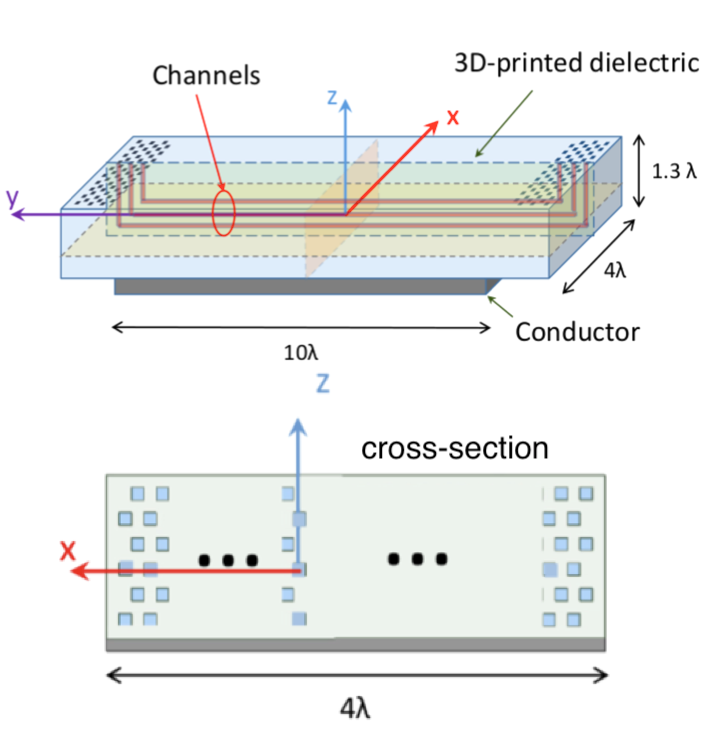
|
| 3D printed graded index of refraction lens and externally metallized circular horn antenna with measured peak gain above 18dBi ... read more |
|
Millimeter-wave long-slot traveling wave antenna with corrugated slow-wave interior structure for output beam angle control ... read more
|
|
Wide angle beam-steering reflecting surface at 30 GHz for indoor 5G environments. Structure fabricated using fused deposition modeling 3D printing technology ...
read more |
|
|
|
|
|

|
|
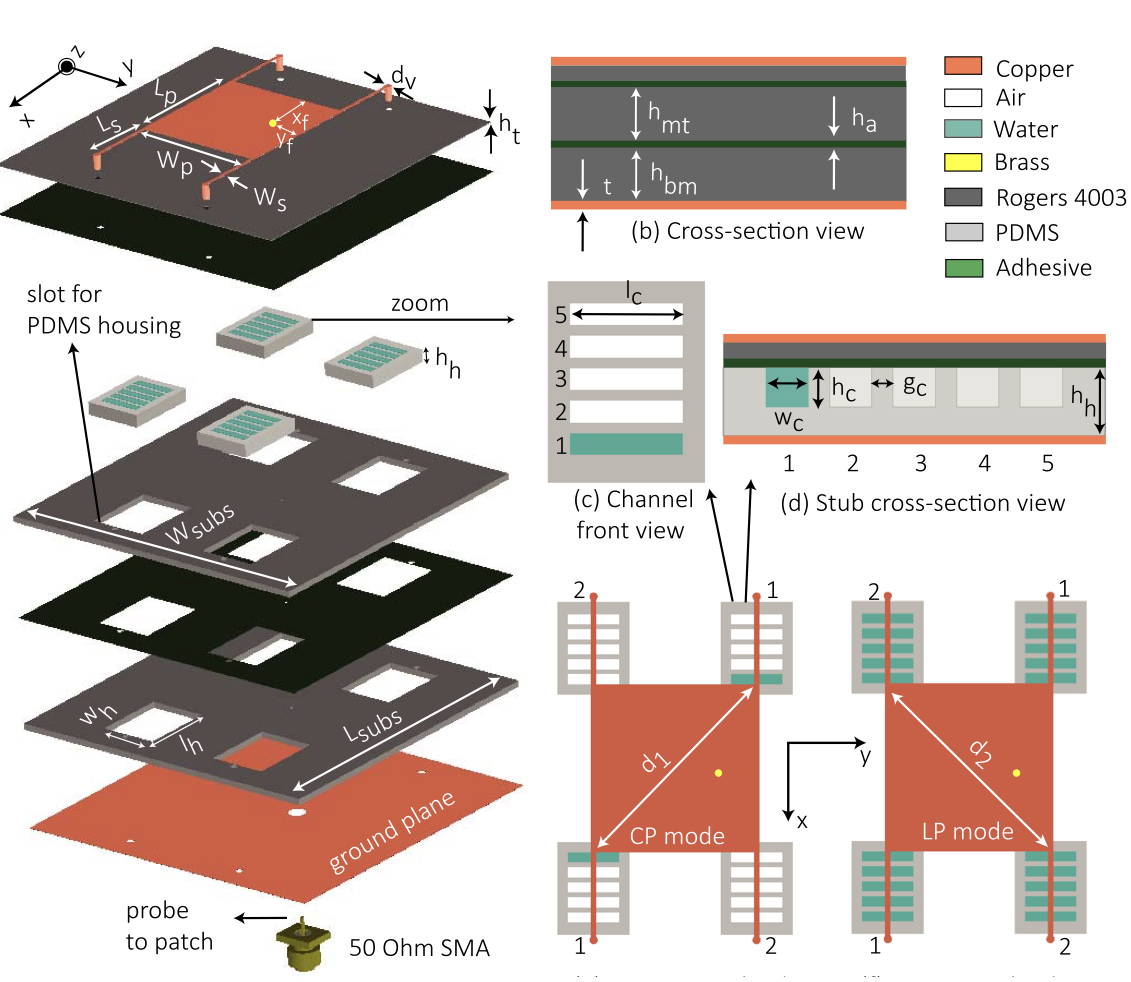
|
|

|
| First known demonstration of a fluidically reconfigured lensed beam-steering antenna. Measured realized gain is 8.6 dBi and beam-steering angle is 25° at 32 GHz ...read more |
|
Polarization and frequency reconfigurable patch antenna. Measured axial ratio is ≤ 3 dB for both LHCP and RHCP modes... read more
|
|
Ultrawideband magneto-electric antenna exhibiting a measured realized peak gain of 10.4 dBi at 24 GHz. Impedance bandwith is a record 75.7% ...
read more |
|
|
|
|
|
|
|
|
|
|
|
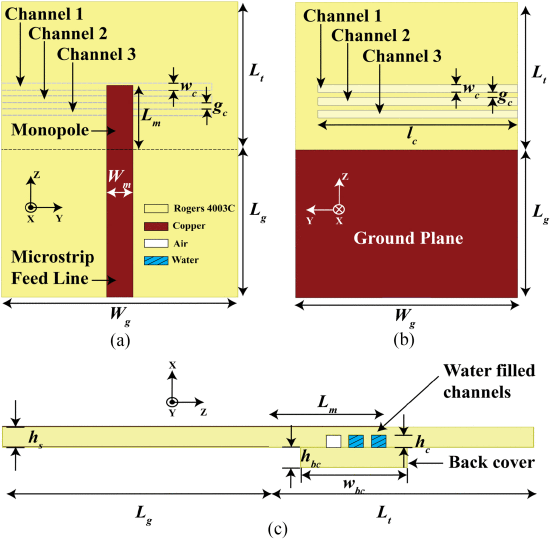
|
|
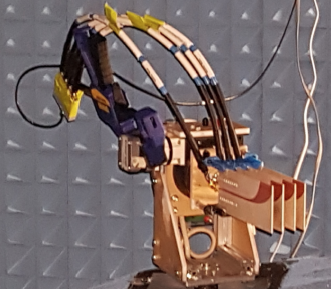
|
|
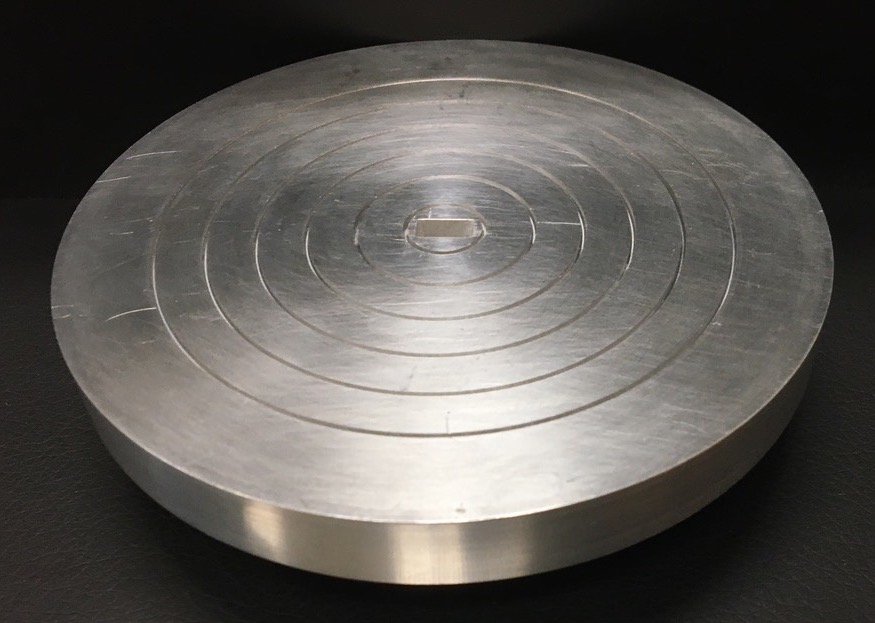
|
| Tunable monopole antenna with
measured frequency
shift of up to 23.7% and impedance band width of
29.9% ... read more |
|
Antipodal
Vivaldi phased array exhibiting 90° of beam scanning to 6.5 GHz and realized gain of
13.1 dBi ... read more
|
|
Millimeter-wave Bull's-Eye antenna
with peak gain of 18.9 dBi at 36.1 GHz and return loss below -15 dB ...
read more |
|
|
|
|
|
|
|
|
Sensors, Circuits and Systems
|
An inclinometer based on an angular microstrip half-wavelength resonator, consisting of a fixed and an overlapping, mobile part, is demonstrated. When the inclinometer is tilted, the length of the resonator and consequently, its resonance frequency changes. Experimental tests show that the inclinometer exhibits a sensitivity of 0.384 mm/° and a resolution as 0.035°. The proposed sensor is easily fabricated , cost-effective, compact, and robust.... read more
|
|
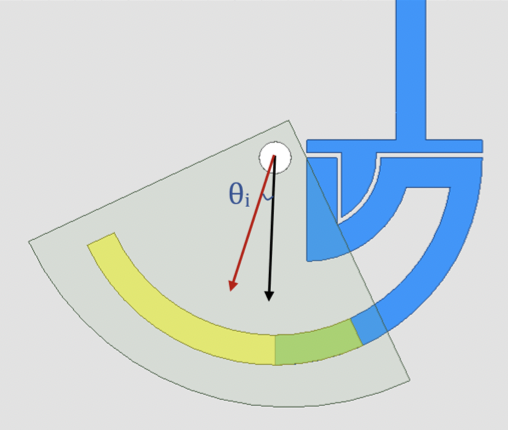
|
We are investigating techniques to characterize the dielectric properties of materials. Recently we demonstrated a new dual-band sensor to measure uniaxial anisotropy of dielectric materials. This sensor has two dual-mode resonators in microstrip technology. The configuration of vertical and horizontal electric field lines for the two resonance modes allows for the characterization of a uniaxial anisotropic samples placed on top of the sensor. Space mapping is used to extract the dielectric constants of the sample in two directions, parallel and normal to the surface of the sensor... read more
|
|
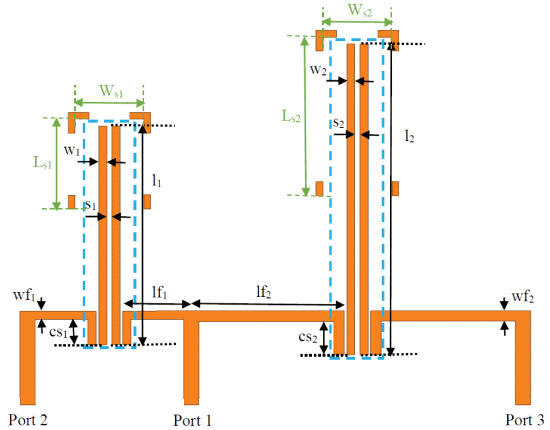
|
A six-band microstrip sensor, based on a pair of electrically coupled resonators (ECRs), for dielectric characterization of liquids is demonstrated. A pocket is milled through the substrate bottom of the sensor to contain the fluid sample, avoiding the need for a sample holder. The pocket is located in a region of high electric field intensity between the open loop resonators. Experimental tests show that the sensor can measure a wide range of εr values between 2 and 79 ... read more
|
|
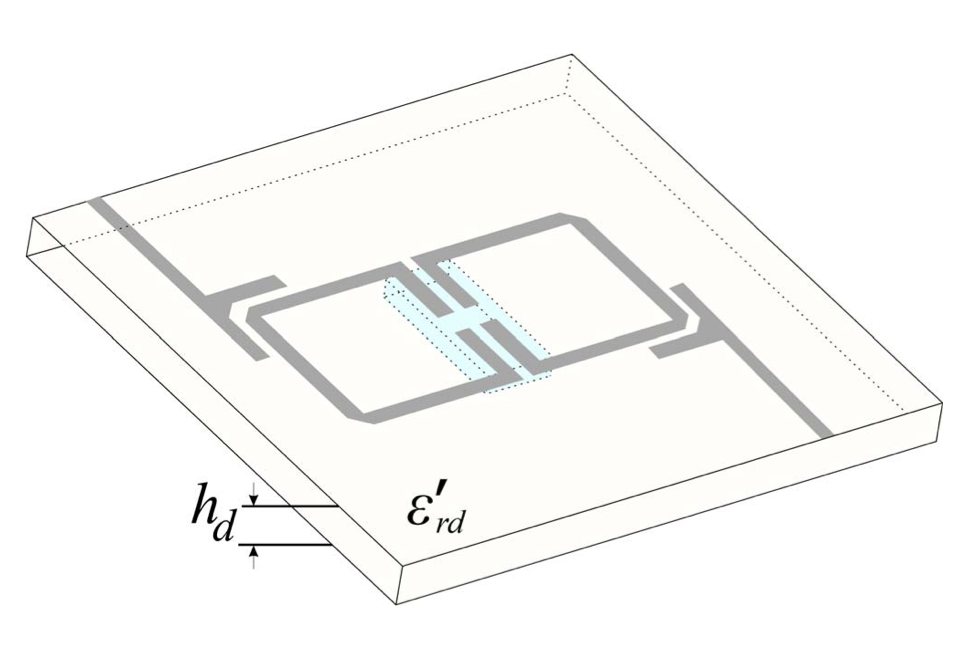
|
The broadband complex permittivity response of widely used thermoelastic polymers used in 3D printed electromagnetic structures is reported. Fluids such as ethylene glycol and water solutions, solvents and certain oil compounds for microfluidic antenna and microwave passive circuit design are also reported. Analytic expressions for the permittivity response as a function of frequency for the materials under study were extracted and fit to the Cole-Cole equation using a nonlinear least-squares routine ... read more
|
|

|
Dielectric fluid channels located on a transmission line path can change in the propagation velocity of the guided wave. This effect can be used to design tunable passive microwave/milimeter-wave structures for high-power applications since fluids do not introduce signal distortion or electronic noise. The fluidic channels in the transmission line path can be modeled using a lumped-element electric circuit to facilitate circuit design... read more
|
|
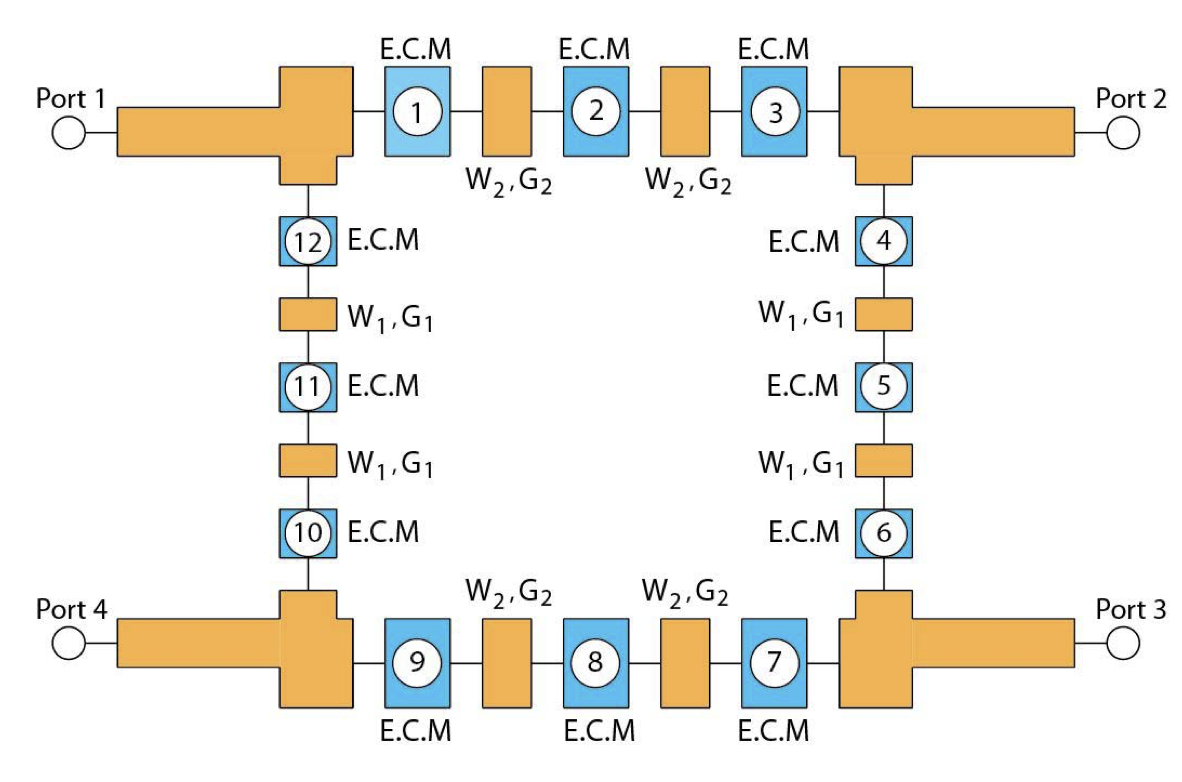
|
Massive MIMO systems use
high-resolution phase shifters for beam-forming. We have set
performance records for low phase-error, high-resolution phase shifters
using that are electronically tunable over the full 360° range.
Our technique (figure right) uses coarse and fine vector scaling broadband
to obtain precise vector amplitude control, resulting in measured
RMS phase and
amplitude errors of 1.25° and 0.7 dB, respectively, at 5.4 GHz. The central component of
the system are microwave operational transconductance amplifiers (OTAs)
pioneered in our group ... read more
|
|
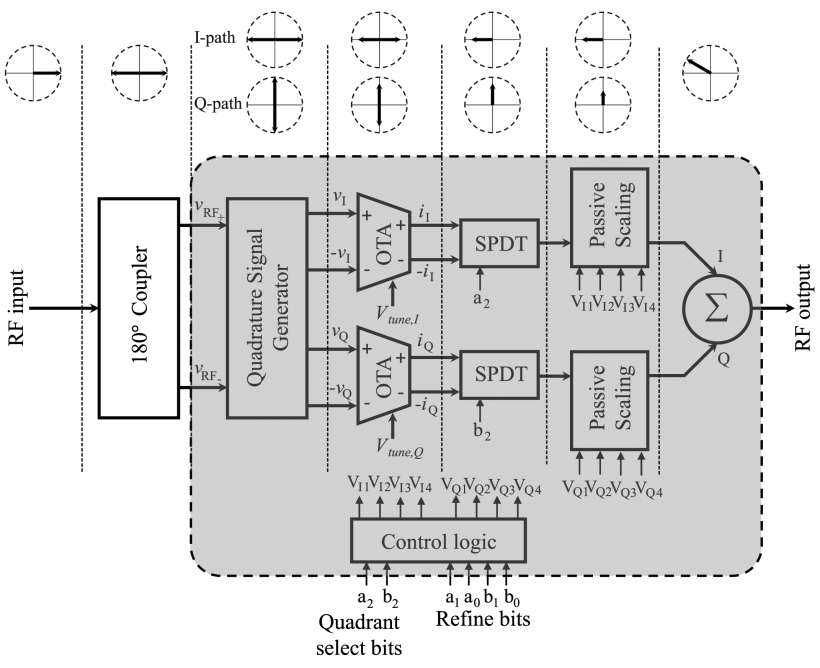
|
|
|
 Stringent
linearity requirements are placed on power amplifiers (PA) found in
scientific test instrumentation because the equipment's performance has
to be superior to the circuits under test. Using gallium nitride
(GaN) transistors for power amplification and employing RF
digital-assist methods, our Group has developed broadband power
amplifiers delivering 2 Watts of RF power over a 6 GHz band- width with
a measured OIP3 above +50 dBm. The PA output stage was designed
using a GaN HFET process at the Canadian Photonics Fabrication Centre
in Ottawa ... read more Stringent
linearity requirements are placed on power amplifiers (PA) found in
scientific test instrumentation because the equipment's performance has
to be superior to the circuits under test. Using gallium nitride
(GaN) transistors for power amplification and employing RF
digital-assist methods, our Group has developed broadband power
amplifiers delivering 2 Watts of RF power over a 6 GHz band- width with
a measured OIP3 above +50 dBm. The PA output stage was designed
using a GaN HFET process at the Canadian Photonics Fabrication Centre
in Ottawa ... read more
|
|
This
distortion-cancelling circuit block (cell) reduces signal distortion in
microwave amplifiers inde- pendently of the inner-workings of the
amplifier. Therefore, the cell can be used to improve the performance
of generic off-the-shelf amplifiers. The distortion canceller uses the
principle of ... read more
|
|
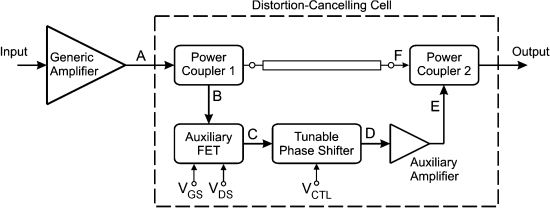
|
|
|
Collaborators (current and former)
|
- Guildline Instruments Ltd.
- Grafoid Inc.
- California State University Northridge, USA
- Defense Research and Development Canada
- INAOE, Mexico
- Version 2 Inc.
- Capella Aerospace
- Test Photonics Ltd.
- Royal Military College of Canada
- Univ. Federal do Rio Grande do Sul, Brazil
|
- Gain Microwave Corp.
- CEIT, San Sebastian, Spain
- Universidad de Navarra, Spain
- Universita di Trento, Italy
- Xi'an Jiaotong University
- Gennum Corp.
- Universiteit Twente, Holland
- Politecnico di Torino, Italy
- CINVESTAV del IPN, Mexico
|
|
| _____________________________________________________________________________________________ |





















 Stringent
linearity requirements are placed on power amplifiers (PA) found in
scientific test instrumentation because the equipment's performance has
to be superior to the circuits under test. Using gallium nitride
(GaN) transistors for power amplification and employing RF
digital-assist methods, our Group has developed broadband power
amplifiers delivering 2 Watts of RF power over a 6 GHz band- width with
a measured OIP3 above +50 dBm. The PA output stage was designed
using a GaN HFET process at the Canadian Photonics Fabrication Centre
in Ottawa ... read more
Stringent
linearity requirements are placed on power amplifiers (PA) found in
scientific test instrumentation because the equipment's performance has
to be superior to the circuits under test. Using gallium nitride
(GaN) transistors for power amplification and employing RF
digital-assist methods, our Group has developed broadband power
amplifiers delivering 2 Watts of RF power over a 6 GHz band- width with
a measured OIP3 above +50 dBm. The PA output stage was designed
using a GaN HFET process at the Canadian Photonics Fabrication Centre
in Ottawa ... read more